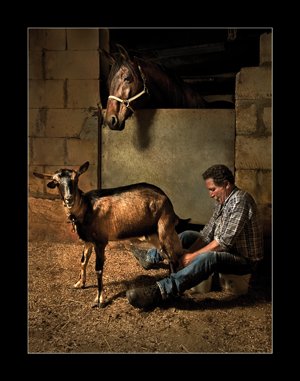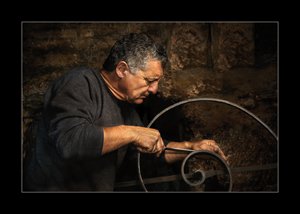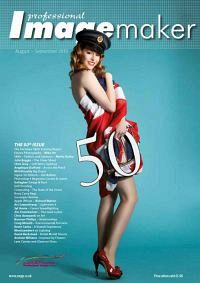articles/Profiles/artisticbackgroundprofiles-page1
My artistic background Christopher Azzopardi ASWPP - part 1 of 1 2
by Christopher Azzopardi Published 01/08/2010

Art plays an important role in my life, in fact by profession I am a teacher of art at one of the leading colleges in Malta and a visiting lecturer at the University of Malta where I teach computer graphics. I studied art at the State School of Art in Malta, University of Malta and Accademia di Belle Arte in Perugia, Italy. It was just six years ago that I began taking photographs. I first began to take record shots of my daughter who at that time was still a baby but I immediately got hooked on photography and soon after I joined the Malta Photographic Society to learn more about this form of art.
Since childhood I was interested in capturing the human form on paper and canvas and so in photography it was an obvious choice to specialise in portraiture. Most of my photos are not commercial; I do them for passion, even commissioned work. Although I try not to be commercial in my work more and more people are hiring me to take their portraits.
Influence
Both in painting and in photography I am greatly influenced by the great artists of the Renaissance and Baroque periods, such as Leonardo da Vinci, Michelangelo, Caravaggio and Rembrandt. In my portraits I try to emulate the lighting and colour palette that these artists have used in their paintings. As lighting I try to use simple lighting and more often than not I use one single light source. I do so for various reasons, such as:
1) Flexibility to assemble on location;
2) Consistency in style; and
3) Realism - in nature we find one main light source, that is the sun.

How do I approac h my subjects?
Besides commissioned work, I take lots of portraits for myself and I'm always alert to find interesting characters. When I find one, I ask him/her in a polite way if it is possible to photograph them. I always explain in detail what I'm going to use their photo for. I always keep some photos at hand so that I show them what type of photos I take. As soon as they see my photos they always accept to be photographed. We normally fix an appointment that is convenient for both of us. On the day of the photo shoot I spend some time talking and listening to the sitter's stories, as I find this time very useful for a successful photo shoot. At this time I'm building trust in the sitter and at the same time I'm observing his/her behaviour. It is during this time that I plan the creative shots. All my portraits are taken on location, usually at the sitter's house or workshop. I prefer environmental shots over studio shots because I find them more challenging and interesting. Another advantage that I find in taking environmental portraiture over studio shots is that sitters will be more relaxed because they are being photographed in their own environment.
I start my photo shoot by taking some snapshots and after a few shots I show them to my sitter and I explain to him/her the pros and cons in the shots that I have just taken and then I guide him or her to improve the pose or use a different location. I also ask them for suggestions so that they will feel more involved in the session. I find that the more I involve my models the more relaxed and natural the pose will be. Sometimes, they too come with original and unusual poses and props.
For a successful photo shoot I believe that a photographer should know when to stop. A photo shoot should be an enjoyable time for both the photographer and the model. So far all the people that I photographed enjoyed the photo shoot so much that they hired me over and over again to take their pictures.
You are currently on page 1
- My artistic background Christopher Azzopardi ASWPP page 1
- My artistic background Christopher Azzopardi ASWPP page 2
1st Published 01/08/2010
last update 09/12/2022 14:51:15
More Profiles Articles
There are 16 days to get ready for The Society of Photographers Convention and Trade Show at The Novotel London West, Hammersmith ...
which starts on Wednesday 14th January 2026





